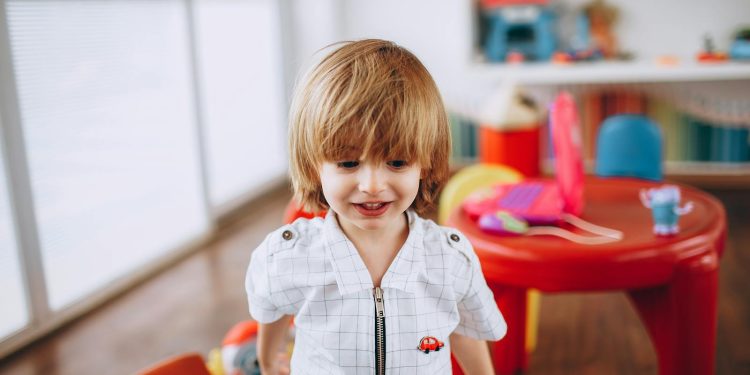Welcoming a new baby into your home is an exciting and transformative experience. As new parents, you want to provide a space that is not only safe but also comfortable and nurturing for your little one. Creating a baby-friendly home environment means adapting your living space to meet the needs of your growing family, ensuring your baby’s safety while fostering an atmosphere of love and comfort. Whether you’re preparing for the arrival of a newborn or adapting your home as your baby becomes more mobile, here are some practical steps to help you create a baby-friendly environment that works for both you and your baby.
1. Safety First: Babyproofing Your Home
The first and most important step in creating a baby-friendly home is to make sure it is safe for your child. Babies are naturally curious, and as they grow and begin to explore their surroundings, it’s crucial to eliminate potential hazards. Babyproofing involves taking a close look at each room in your home and making the necessary adjustments to ensure your baby’s safety.
Start by securing heavy furniture, such as bookshelves and dressers, to the wall to prevent tipping. Install safety gates at the top and bottom of stairs to keep your baby from dangerous falls, and use outlet covers to prevent electrical shocks. Make sure that sharp edges on furniture are covered with protective padding, and store any hazardous items—like cleaning supplies, medications, and small objects—out of your baby’s reach.
It’s also a good idea to get down on your hands and knees to see the world from your baby’s perspective. This will help you identify potential hazards you may have missed, such as dangling cords or small items that could pose a choking risk. Babyproofing is an ongoing process, so continue to reassess your home as your baby grows and becomes more mobile.
2. Creating a Cozy Nursery
The nursery is one of the most important spaces in your baby’s early life, serving as a place for sleep, play, and bonding. Creating a cozy and comfortable nursery can help your baby feel safe and secure, which is essential for healthy development. When setting up the nursery, focus on creating a calm and soothing environment that promotes relaxation and rest.
Choose a crib that meets the latest safety standards, and make sure the mattress fits snugly with no gaps around the edges. Avoid using crib bumpers, pillows, or stuffed animals in the crib, as these can pose a suffocation hazard. Consider adding blackout curtains to help regulate light during nap time and a white noise machine to create a calming atmosphere.
A comfortable rocking chair or glider is a great addition to the nursery, providing a cozy spot for feeding, reading, and cuddling. Keep essential items like diapers, wipes, and extra clothing within easy reach to make nighttime feedings and diaper changes as smooth as possible. By creating a functional and comfortable nursery, you can make caring for your baby a little easier while creating a nurturing space for bonding and rest.
3. Organizing Your Living Space
As your baby grows, your living space will need to adapt to accommodate their needs and interests. Organizing your home to create a baby-friendly environment can make daily routines more efficient and enjoyable for both you and your little one. Start by designating specific areas for different activities, such as feeding, play, and diaper changes.
Consider setting up a play area in the living room or another common space where your baby can explore and play safely. Use soft mats or rugs to create a comfortable surface for tummy time and crawling. Keep a basket of age-appropriate toys within easy reach, allowing your baby to choose what they want to play with and encouraging independent exploration.
Organization is key to maintaining a baby-friendly home, so consider investing in storage solutions like bins, baskets, and shelving units to keep toys, books, and other baby items organized. Keeping your space tidy not only makes it easier to find what you need but also helps create a calm and inviting environment for your baby.
4. Encouraging Sensory Exploration
Babies learn about the world through their senses, and creating a home environment that encourages sensory exploration can support their development. Simple additions to your living space can stimulate your baby’s senses and foster curiosity. Consider placing a mirror at your baby’s eye level to encourage visual exploration and self-recognition. Hanging colorful artwork or mobiles can also stimulate visual interest and keep your baby engaged.
Textures are an important part of sensory development, so include a variety of textures in your baby’s environment. Soft blankets, plush toys, and textured play mats provide opportunities for tactile exploration. You can also create a sensory basket filled with different safe objects that your baby can touch, shake, and explore. Remember, supervised exploration is key, as babies will put most things in their mouths.
5. Making Mealtime Enjoyable
As your baby begins to transition to solid foods, creating a baby-friendly eating space becomes important. A highchair with a secure harness is a must for keeping your baby safe during mealtime. Place a splat mat under the highchair to make clean-up easier, as mealtimes can get quite messy.
Incorporate baby-friendly utensils and dishes that are easy for small hands to grip. Encourage your baby to explore different foods and textures, even if it means a bit of a mess. Mealtime is an opportunity for sensory exploration and can be a fun, interactive experience for your baby. Keep your attitude positive and relaxed during meals, as this will help your baby develop a healthy relationship with food.
6. Creating a Comfortable Bath Time Routine
Bath time can be a special bonding experience for you and your baby, but it’s important to create a safe and comfortable bathing environment. Always keep one hand on your baby during bath time and use a non-slip mat to prevent accidents. Make sure the water temperature is just right—warm, but not too hot—and use a thermometer if needed to check.
Organize bath essentials, such as baby soap, washcloths, and towels, within arm’s reach to make bath time smooth and stress-free. Bath toys can make the experience more enjoyable for your baby, but be sure to choose toys that are safe and free of small parts that could pose a choking hazard. A consistent and gentle bath time routine can help your baby relax, making it easier for them to wind down before bedtime.
7. Involving Your Baby in Daily Life
Creating a baby-friendly home isn’t just about safety and organization—it’s also about including your baby in the daily activities of family life. Babies love being close to their parents and observing what’s going on around them. Whether you’re cooking, folding laundry, or gardening, find ways to involve your baby. A safe baby carrier or a portable playpen can help keep your baby close while you go about your day.
Involving your baby in daily activities helps them feel included and allows them to learn by watching and interacting with you. Narrate what you’re doing, sing songs, and talk to your baby throughout the day to support their language development and make them feel like an important part of the family.













